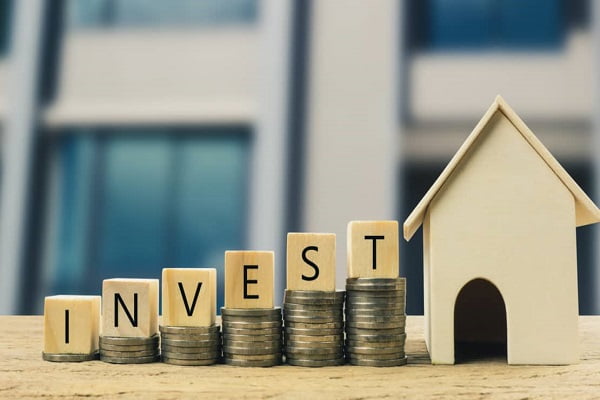Difference Between Business Model and Business Plan
The process of creating and establishing a company requires great attention to detail from the foundation. To do it the right way, it is essential to know the difference between a business model and a business plan and also how to make each one. Although they may be similar, they both work differently and are even complementary to each other.
Without a doubt, learning what it means or what the function of each one is can help you enhance and get the most out of your company. In this article, we will explain what the business model and the business plan are, what their similarities are and how they differ.

Business model and business plan: What are they?
It is common in the business field to confuse what the model and the business plan are, but the truth is that these are two different pieces of the same puzzle. As already mentioned, these also become complementary, so in no way can they be the same. Therefore, at this point, we will give the definitions of each one to understand what it is about.
What is a business model?
To begin to point out the difference between a business model and a business plan, we will say that the former is an instrument that gives the possibility of clarity about the way in which a solution is offered to a market need or service. Of course, these must be clear when defining the strategies that will be used in pursuit of a business’s objectives.
Through one of these models, it will be possible to distinguish what the value of a product is, what is needed to introduce it to the market and to which public it will be marketed. Business models are crucial to knowing how to launch a company’s operations. Furthermore, one of its great uses is to be an excellent ally for business planning, as is the Canvas business model and the different tools it presents for business.
Read Also: 8 Simple and Profitable Business Ideas For Car Lovers
Characteristics of a business model
To make the definition even clearer, it is important to point out its characteristics. Thus, it will be easier to identify the difference between a business model and a business plan.
1. They generate a value offer
It is necessary to carry out good research and observation to determine which value offer is capable of giving people business. As an entrepreneur, you must find an ongoing problem or situation in certain sectors, social groups or contexts in which you or other people regularly operate. The idea is that the benefits of your solution are truly useful to consumers and are not a copy of what the competition offers.
2. Clearly define your clients
When identifying a problem, you also usually establish the audience to which the business has to be directed. Of course, the goal is to reach the greatest number of people, regardless of their characteristics or where they are. However, the best thing to do is to think about who might really be interested in the product that the company offers, how much they would be willing to pay and how it might be attractive to them.
3. The main objective is profitability
It is known that all businesses have the main goal of generating the greatest amount of profits. Beyond this, if as an entrepreneur you have not investigated and understood the value of your market offering and the profile of your consumers, it will be difficult to make your business profitable.
In principle, you must ensure that the production of your value offer is not higher than the expected sales . This should not be based on abstract calculations, but on adjustments to operating costs and analysis of raw materials, added to expenses.
Classification of business models
After knowing what it is and what its characteristics are, it is time to discover the types of business models. In this section we will highlight the most important or most common ones; However, you can find a lot of information and classifications about these.
1. Market leader
This model consists of the projection of a company that seeks to position its brand as a leader in a specific market. For this, an aggressive strategy is required, which generates a market need or also a plan that in the long term generates solutions of higher quality than those of the competition.
Of course, this model represents the aspiration of many companies, so it is not usually something instantaneous and takes time.
2. Multicomponent
This model occurs when the same value offer targets different spaces, in various volumes, for different clients and at different prices. The clearest example of these is Coca-Cola, since its products can be found wholesale or retail. These are available in supermarkets, stores, vending machines or even in their own stores.
3. Switch
When we talk about a switching business model, we are referring to one that turns a single entrepreneur into a distributor of a raw material. It does this for any company that requires these elements to carry out its business proposal. This model is not simple, since certain antitrust practices must be complied with and thus achieve control of supply.
4. After-sales
This is one of the most traditional and bases its true profits on the sale of consumables or supplies to take advantage of or operate a product that is purchased on a single occasion. For example, when purchasing a printer, we enter a chain in which we must continually buy cartridges to use it. This can also be seen with software, which is purchased, but over time requires updates or support.
5. Freemium
This model is very typical of movie, music or training streaming platforms. From this, customers start a service or product for free, which is then offered an upgrade for a fee, such as the removal of advertising, attention benefits or unlimited access to all tools. Another example of this model is online stores that offer a membership to give priority to delivery or cancel shipping costs.
The above are only five types, but you can also find those that are affiliation, franchise, subscription, manufacturing or virtual products. The important thing is that by knowing their types, you can easily find the difference between a business model and a business plan.
How to develop a business model?
Although there are many types of business models, to create one of these you must follow certain steps. The first thing is to choose a customer segment that the company or business aspires to reach to offer its products or services. Subsequently, it will be necessary to define the value proposition that the company has, in order to differentiate itself from the competition and position itself as the best solution.
You already know what and who, now it’s time to select the channels through which you will communicate with your customers. These can be your own or they can also be through platforms and different types of advertising. It is also important to define what the relationship with consumers will be like and the tone of communication that you will manage with them.
Now, resources are vital and that is when you will have to define the sources of your income, which can be diverse depending on your company and what it markets. Then, you must find the resources to carry out your model: these are human, creative, physical and financial.
Finally, it is essential to make a list of the key activities for your business, then select the partners for your project and finally, carry out a detailed analysis of the relationship of costs involved.
What is a business plan?
On the other hand, the business plan is a document that describes the objectives of your company and the activities to be carried out to achieve them. This tool will serve as a guide for the businessman or entrepreneur to manage his ideas in aspects as important as financing.
Keep in mind that this is what is called a living document, which means that it can be modified along the way. Even the variations that it may be subject to can be developed after its application. The main goals of the business plan are to support the search for financing and help in the operational management of the business.
What is included in a business plan?
A business plan must have some key elements. Each one has a function and serves as part of a chain to define all the company’s objectives. Below, you will find what you must have in this document:
1. Executive Summary
Here all the information contained in the model is covered, but reduced to the maximum expression. Although this point should consider all the aspects that are addressed, many times there are topics that are discarded. Those that are essential are the name of the business, type of company and activity, data, description of the business and what it offers.
2. Business definition
In this component, you must focus on providing details about the business concept and everything related to the operation of the company. If this is the case for your company, you can add photographic records of prototypes of your products or beta versions. This will allow readers to learn more about the brand, graphic identity, among others.
3. Market study
This element is essential so that the concept and strategies proposed are offered in the best way. Here you can include the companies or brands that are considered competitors, as well as a study with their sales and disadvantages. Likewise, in this section you can highlight the niche or sector in which your products or services are directed.
4. Technical study
Here you must detail everything related to the resources, not only the economic ones, but also the material and conceptual ones that are part of the project. The material infrastructure or machinery that you require to develop your product or service must be included. In addition to the above, you will have to specify the physical spaces that you will use for the development of your project.
5. Business organization
How is the company composed? This component describes in an extended manner the responsibilities of each position and what those who assume a specific position commit to at a legal level. This part of the document also indicates the type of company you will seek to have. The topic of schedules, dress code, name of vacancies, professional profiles and salaries are elements that should go here.
Read Also: 10 Small Business Ideas for Ladies from Home
6. Investment and financing study
At this point, the business plan specifies the amount of resources that need to be invested in the case of external financing and agreements. The strategies that are contemplated so that the investments generate profits are also explained and the areas in which each cent of the investment will be invested are specified. Assets that are considered fixed and intangible assets must be considered in this section.







